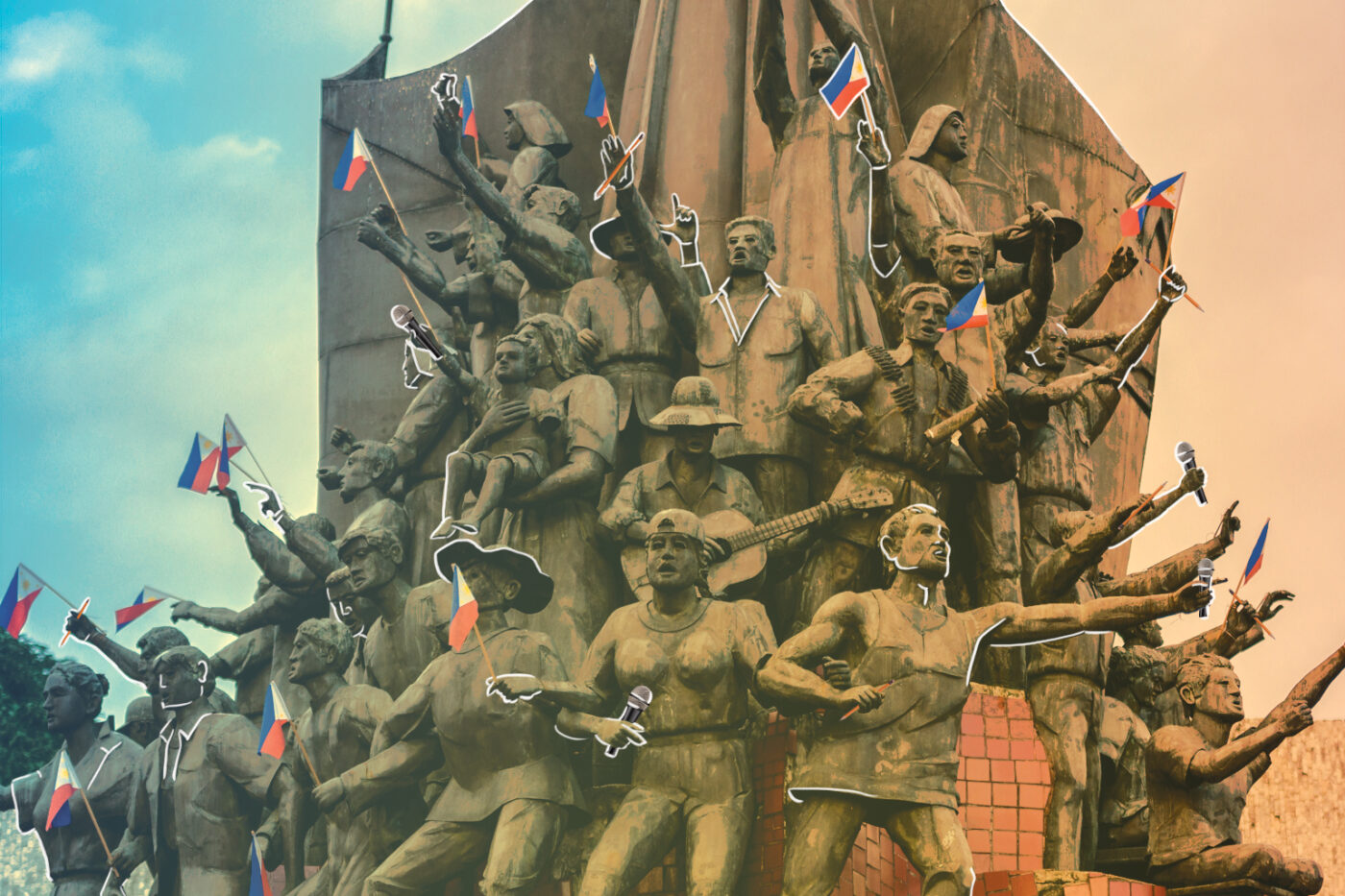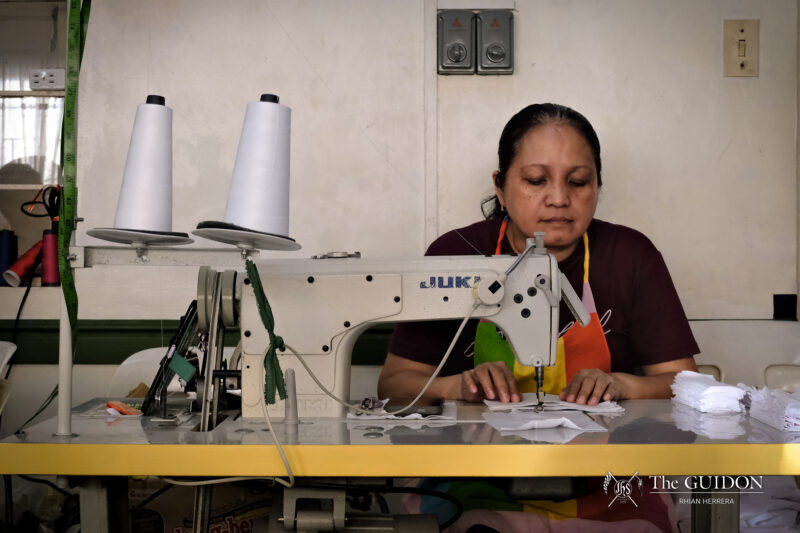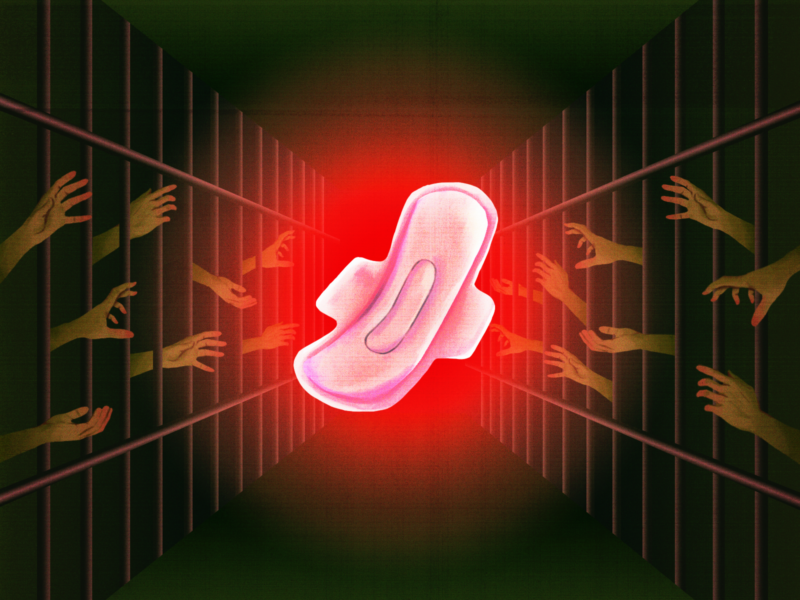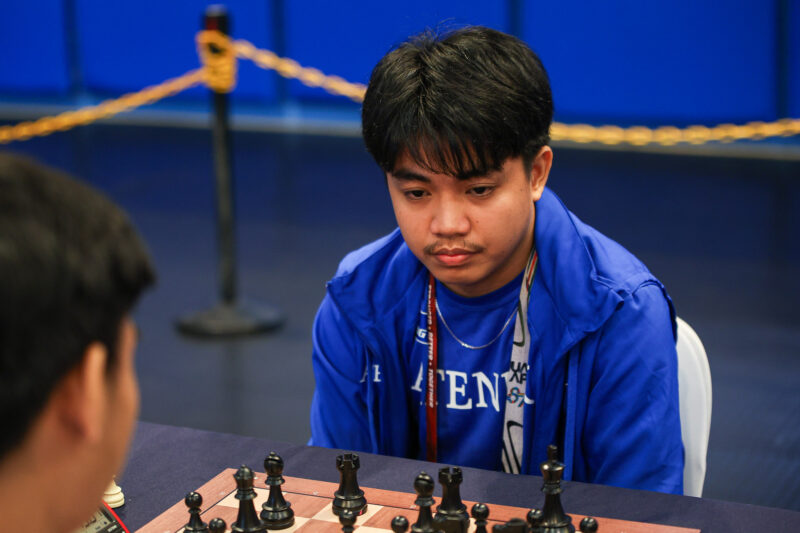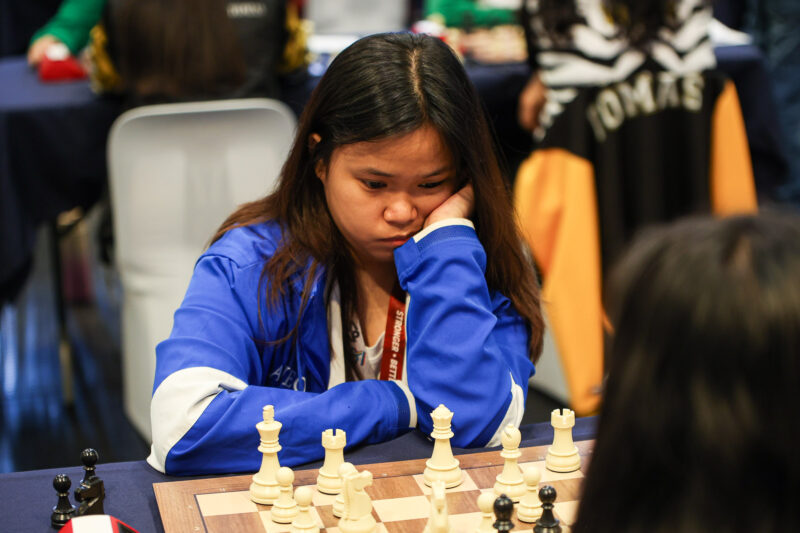Even though the paint crumbles, the old films fade from the limelight, and the protest music becomes distant and unfamiliar, the EDSA Revolution still holds a timeless and haunting cultural relevance.
With arms outstretched and faces turned upwards, stone-faced and determined, the figures of the People Power Monument along Epifanio de los Santos Avenue has, for us Filipinos, become a symbol of our continuous struggle and fight for freedom.
The People Power Revolution, known all over the world for its peaceful and bloodless nature, was a series of demonstrations that lasted for three days, leading to the departure of then-dictator Ferdinand Marcos and the apparent restoration of democracy in the Philippines. Freed from the clutches of the oppressive reign, Filipino artists have since become free to voice out their experiences and struggles during the regime, where strict censorship curtailed and suffocated the voice of countless Filipinos.
With the anniversary this month, the time has come again for the Philippines to deeply reflect on its past. The parting messages of such works do not just die with each succeeding decade, crisis, or conflict, after all.
The flight to emancipation
During the years following the lifting of Martial Law and leading up to the People Power Revolution, artists questioned the authenticity of the restored liberty. Armand Bacaltos, a Fine Arts professor from the University of the Philippines, recalls a tense “hang time” right before the Revolution.
“The atmosphere and the leadership [were] still there. So I guess it was a self-imposed kind of a censorship, a fear for the reprisal of the state,” says Bacaltos. Skeptical but desperate for uninhibited freedom, many artists went underground and “to the hills” to fight for change.
There were some, however, who focused on enlightening others about the violence that permeated Filipino civic life. Protest art peaked. Leonilo Doloricon, a social realist and editorial cartoonist, describes the form to be clear in message and rendering. “Sa gallery… may time ka pang mag-engage intellectually with the content. Pero yung nasa kalye, kailangan immediate ang effect sa tao (In galleries, you have the time to engage intellectually with the content. On the streets, however, the effect of your painting must be immediate),” he says.
In the form of comics and posters, these images went around in secret. With Lino Brocka’s film Bayan Ko: Kapit sa Patalim (1985) deemed subversive by the government and the newspapers sanitized of reports of human rights abuses, censorship was tacitly in effect.
But catalyzed by art, union protests, and the revolution itself, the cultural scene transformed into a space of genuine freedom of expression. Once again and more than ever, expression was possible.
Unleashed voices
“It’s at the very heart of a democratic society that you should have the right to express what you want [and] to express yourself freely in terms of the Arts—in terms of the media,” says Filipino department lecturer and filmmaker Alvin Yapan. Indeed, it was in the wake of the EDSA Revolution that the lifting of censorship pervaded all aspects of Filipino society and culture, reawakening artistic and cultural freedom.
With pieces such as “Handog ng Pilipino sa Mundo” by the Apo Hiking Society and Robert Markowitz’s A Dangerous Life (1988), artists dared to speak out about collective convictions and experiences. These works were some of the first expressions of the newfound freedom that came in light of the revolution.
In fact, even during the revolution, people were beginning to actively ignore the cultural and artistic restrictions. For instance, Freddie Aguilar’s song “Bayan Ko” was banned throughout the era and yet during the revolution, crowds would sing it together in defiance of the ban, with Aguilar himself leading the crowds in song. It became an anthem that represented the desire of countless Filipinos to break free from the regime’s oppression.
A larger sheet
After the revolution, writing in the Philippines became an outpour of withheld musings. In his essay entitled “A Report on Philippine Writing Since 1986,” Bienvenido Lumbera wrote, “Literary production in post-EDSA Philippines has moved away from the confrontational social consciousness of committed writers, to the more even-tempered, personal perspective of the artist aware of his social milieu.”
“The 1986 People Power Revolution has always been viewed in terms of the political rivalry of the Marcoses and the Aquinos. It’s usually read as a rivalry between these two political factions,” Yapan states. Thankfully, this singularized cause for political propaganda was put to rest and opened spaces for thought and analysis. A spectrum of political positions was developed in written works by literary scholars Gelacio Guillermo, Soledad Reyes, and Virgilio Almario.
Furthermore, there was a significant rise in the translation and publication of literature. School presses, such as the Ateneo de Manila University Press, made readily available certain Filipino texts which, according to Lumbera, included “titles that considerably augmented teaching materials for courses in traditional Philippine Literature.” Other themes such as feminist anthologies and gay poetry added to the mood of post-revolution literature.
The most revolutionary, however, was a new participation of the masses in the literary and artistic scene. The academician-dominated field was filled with music, cartoon komiks, and books written by guerilla soldiers and peasants that characterized the dream for a lasting democracy that can be shared by all.
Blood canvas
While many fists were clenched in the air as activists rallied against the oppressive regime, there were those that gripped brushes and palette knives to demonstrate their anger.
Phyllis Zaballero’s arresting piece, “August 21,” makes use of color symbolism: a vision of a dying man lying in a space splotched with the country’s colors. Blue and yellow strokes, allegorical to the vision for peace and hope, is overtaken by the red, or widespread violence.
Along with Zaballero were visual artists Pablo Baens Santos and Egay Fernandez, who stayed consistent with the genre through the Corazon Aquino administration and beyond. Social realism became the post-revolution art movement.
Through their mode of satire, social realists continue to recall the issues raised even before the revolution and the failure of succeeding governments to address them. Neil Doloricon, when asked about the danger of forgetting, wistfully replies, “Nakalimutan na nga, hindi ba? (It’s already been forgotten, hasn’t it?)” Bacaltos describes post-Martial Law years to be “a sort of [revival] of libertarian values, but [now] the old political order [has] found its way back.”
But with enduring hope, these artists tread on, unifying art and advocacy in their work. Tackling issues from agrarian reform to folk religion, the stress will always be on social change. They make it a point to assert that nationalism is invaluable; it breathes life into the dry paint, and into the future of the homeland.
Overall, these works of music, film, literature, and visual art not only remain as stunning expressions of freedom and representations of the life of the times. They also stand as a constant reminder of the will of the people, their strength to overcome hindrances to their human rights and overthrow those who set them. The looming fear of one’s rights being forcibly taken away by the very government that is supposed to help them, will remain very relevant in times when the fundamental right to life is threatened.
While some may argue that Filipinos forgive easily, these works cement the pains that we should never forget.

